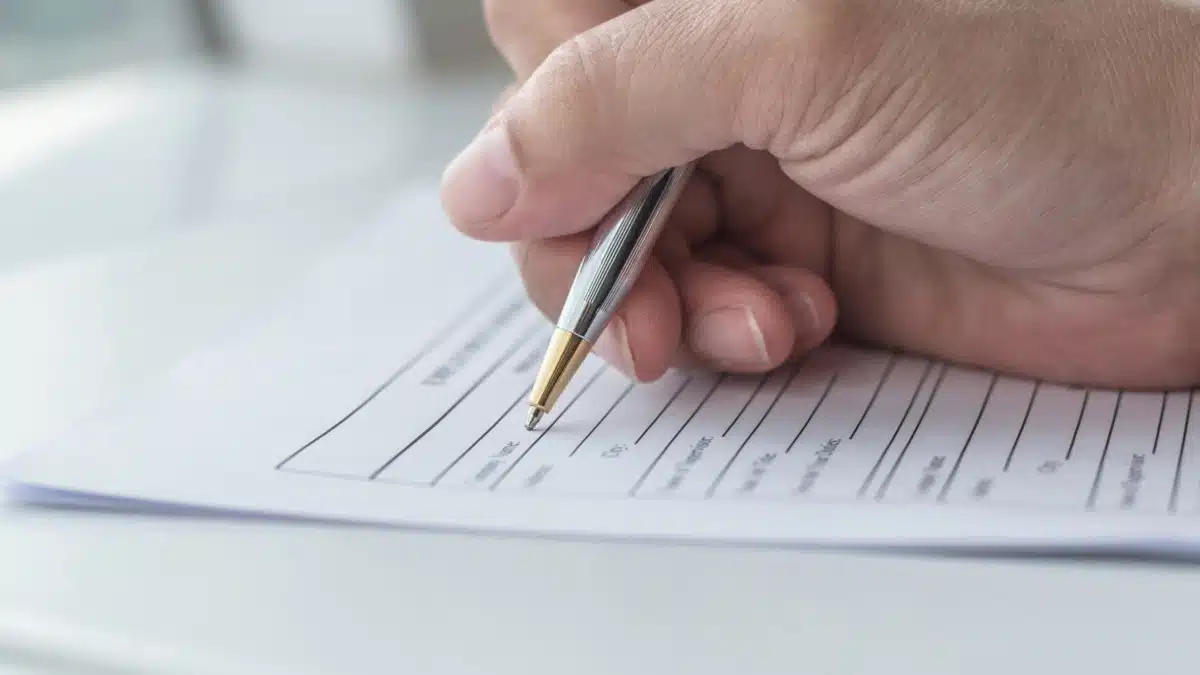So after a lot of time thinking it through, you’re finally ready to commit to becoming a homeowner. Congratulations! You’ve got a lot to look forward to, but now you also have a lot of work ahead of you. One of the most confusing aspects of buying a home, especially for first-time buyers, is the mortgage approval process. This part of the buying process can seem very intimidating at first but so long as you’ve got a good credit score, and enough saved for a down payment, there’s really not a lot to it. Here we break down all the steps in the mortgage approval process. There are six distinct phases to it, pre-approval, house shopping, mortgage application, mortgage processing, underwriting, and closing. Here’s everything you need to know about each step.
1. Mortgage Pre-Approval
Before you begin your home search, the first thing you’ll want to do is get pre-approved for a loan. This is when a lender reviews your financial stability to determine if you’re a good candidate for a loan. This is done by taking a hard look at your income, debts, and assets. You’ll need to provide a series of documents to verify your statements and a credit check will also be pulled to show your credit score and credit history. Based on all this, your loan officer will inform you of how much they are willing to lend you and provide you with a pre-approval letter to that effect. This is worth doing before your home search because it lets you narrow down how much home you can afford. It also lets sellers know that you are a serious buyer as it shows you can back up your offer.
Be prepared to provide the following documents at a minimum:
- Employment history or verification of employment
- Tax returns going back at least 2 years
- Pay stubs for the last 30 days
- Proof of all current debts
- Bank statements going back at least two months
- Proof of all personal assets
Pre-Qualification vs. Pre-Approval
As you learn more about the mortgage process, you’ll come across these two terms, pre-qualification and pre-approval. While they might sound the same, they are not to be confused with each other. Pre-qualification is a more informal step in which you provide a loan officer with your financial information and they give you an estimate for how much you can expect to borrow. This is in no way a commitment to the stated loan amount as your financial information still has to be verified. When making an offer on a home a pre-qualification letter carries far less weight than a pre-approval letter. If you want the best chance of getting your offer accepted, then go straight for pre-approval.
2. House Shopping
Now that you have your pre-approval letter you can really begin searching for a home. If you don’t already have one, give strong consideration to hiring a buyer’s agent. They’ll have the experience and know-how to cut time out of your home search and ensure you land the best deal. If you want the very best in service, go with an exclusive buyer’s agent. This is a real estate agent that works exclusively with buyers. They’ll know all the ins-and-outs of the whole buying process and can help you narrow down your search if you find yourself flush with choices.
After viewing a few properties and finding one you like it will be time to make an offer. Your buyer’s agent will know exactly how to structure it to give you the best chance of being accepted. If a deal is reached between both parties, then a binding purchase agreement will be signed. The deal is now in motion and you can move ahead to finalizing the loan.
3. Mortgage Application
Once you’re under contract your lender will be required to send you a Loan Estimate (LE) within three days. The form is the exact same with almost every lender and allows borrowers to easily compare different offers. It will outline the loan amount, interest rate, origination, and other fees, closing costs, loan terms, your expected monthly payment, property taxes, and homeowner’s insurance. It will also detail how your interest rate and payments may change over the future, as well as penalties for late-payments and other terms unique to the loan. If you’ve applied to multiple lenders you can now choose the best one that suits you.
After you’ve chosen a lender, you’ll need to fill out a mortgage application form. Most lenders use the same form which is the Uniform Residential Loan Application (URLA), also known as Fannie Mae form 1003. Here you’ll need to provide information about the property being purchased, the loan type, along with information about you, the borrower.
Once you have your purchase agreement and completed loan application, you can move on to the processing and underwriting stages.
4. Mortgage Processing
As part of the processing stage, your loan officer will begin collecting all the necessary documents to begin the underwriting process. They will provide you with a list of all the documents needed as well as what’s not needed. To give your loan the best chance of receiving final approval, provide extra documentation. For instance, if they ask for pay stubs going back three months, provide six months’ worth. If they want the last two years of tax returns, provide the last three years’ worth. If anything comes up in the underwriting phase and the underwriter needs further documentation, then they’ll already have it with them. Once again, your income and employment will be verified, as well as your credit report if that hasn’t already been done.
At this point, the home appraisal will also be done to confirm that the property is worth what it’s selling for. This is done for the lender’s peace of mind. Should there be a foreclosure they’ll want to be sure the property is actually worth the loan amount.
5. Mortgage Underwriting
The underwriting process is when all your documentation is given a hard look by a licensed underwriter. All financial information will have to be verified and any discrepancies cleared up with supporting documentation. Their job is to sniff out any potential red flags that could indicate fraud or future problems with repaying the loan. Once everything has been reviewed the underwriter will give their decision, loan approval or denial. It sometimes happens that a borrower will receive conditional approval. This means that the underwriter is mostly satisfied with your application but there are a few things that first need to be cleared up. For instance, the borrower may have received a large deposit into their checking account whose source the underwriter cannot determine. Once the source and reason for this deposit are determined with documentation, the loan can move to final approval.
The borrower is now approved for the loan and will receive their loan commitment letter. This will indicate their loan program, loan amount, interest rate. In some cases, it may also indicate some conditions that have to be met before closing.
6. Closing
Once all conditions for the loan have been met, the borrower will receive final approval and be “clear to close.” Your purchase contract will probably have included an estimated closing date. Your buyer’s agent can now begin scheduling with the sellers and loan officer for a firm closing date. At this point, you must ensure that the closing date is set before the expiry of your loan commitment and any rate lock agreement.
You can expect to receive a big stack of papers. Foremost among these papers will be your Closing Disclosure Statement. It will look very similar to the Loan Estimate you received earlier. The difference being that your Loan Estimate was just that, an estimate of your final costs to close the sale. The Closing Disclosure confirms the final costs and how much you’ll need to bring on closing day. By law, you’ll have three days to review the Closing Disclosure before the closing day. Once again, you’ll have another chance to review your loan terms. Don’t expect it to differ too much from the Loan Estimate as laws prevent them from being too dissimilar.
Once the closing day arrives you can take solace in knowing that you are now at the finish line for homeownership. Here, you’ll sign the loan documents, the seller will execute the deed to the property, checks will be collected and disbursed, and the closing agent will record all the necessary documents to give you legal ownership of the property. Congratulations, you’ve now gone from home buyer to homeowner!
Summary
So there you have it, the six steps in the mortgage loan process. There certainly is a lot to it but hopefully, after this you feel a lot more confident with moving towards it. Be sure to talk with your loan officer and buyer’s agent if anything at all in the process confuses you. Do your own research as well into each distinct phase. The better you understand the mortgage loan process the less intimidating it will appear.

